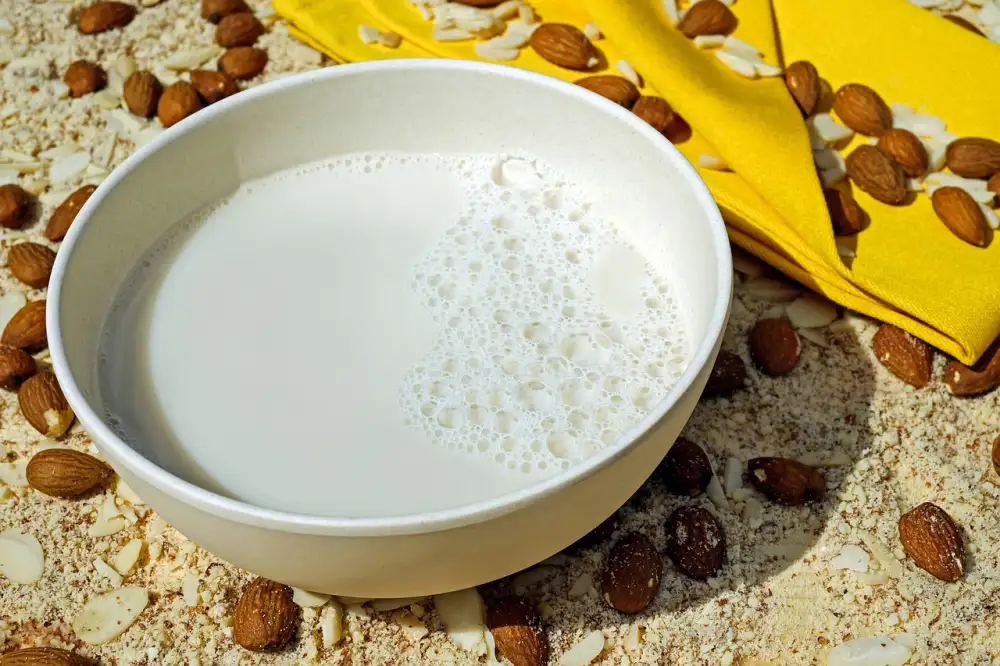Unveiling the Shelf Life of Almond Milk: Does Almond Milk Go Bad? | Health

Almond milk has gained popularity as a dairy-free alternative that offers a creamy and nutty flavor. However, like any other perishable food item, almond milk also has a limited shelf life. It is crucial to understand how long almond milk lasts and the factors that can affect its quality. By knowing these details, you can ensure that you are consuming fresh and safe almond milk. Let's delve into the world of almond milk shelf life and discover how to make the most of this delightful beverage.
How Long Does Almond Milk Last?
Almond milk, a popular dairy alternative, has a relatively long shelf life compared to fresh cow's milk. Unopened almond milk can last up to several months past the printed expiration date when stored properly. However, once opened, its shelf life significantly decreases. On average, opened almond milk can last for about 7-10 days in the refrigerator. It is important to note that these time frames are just estimates and can vary depending on various factors.
Factors Affecting the Shelf Life of Almond Milk
Several factors can affect the shelf life of almond milk, including the quality of the ingredients used, the processing methods, and how it is stored.
Firstly, the quality of almonds used in making almond milk plays a crucial role. Fresh and high-quality almonds will result in a longer shelf life for the milk. It is essential to ensure that the almonds used are not rancid or spoiled before making almond milk.
Secondly, the processing methods employed during production can affect the shelf life. Pasteurized almond milk has a longer shelf life compared to raw or homemade almond milk. The pasteurization process helps to kill harmful bacteria and enzymes that can cause spoilage.
Lastly, proper storage is vital for extending the shelf life of almond milk. Almond milk should be kept refrigerated at all times and consumed within a few days after opening. Exposure to heat and light can accelerate spoilage, so it is important to store almond milk in a cool and dark place.
By considering these factors and following proper storage guidelines, you can enjoy fresh and safe almond milk for an extended period.
Signs of Spoilage in Almond Milk
Although almond milk has a longer shelf life compared to dairy milk, it can still spoil if not stored properly. Here are some signs to look out for to determine if your almond milk has gone bad:
1. Foul odor: If your almond milk smells sour, rancid, or off-putting, it is a clear indication that it has spoiled. Fresh almond milk should have a mild, slightly nutty aroma.
2. Curdling or separation: When almond milk starts to curdle or separate into chunks and liquid, it is a sign of spoilage. This usually happens when the milk is past its prime.
3. Unusual texture: If the texture of your almond milk becomes slimy or grainy, it is likely spoiled. Fresh almond milk should have a smooth and creamy consistency.
4. Mold growth: Visible mold growth on the surface of your almond milk is a definite sign of spoilage. Do not consume the milk if you see any mold as it can be harmful to your health.
It's important to note that these signs may vary depending on the brand and type of almond milk you have purchased. Always check the expiration date and trust your senses when evaluating the freshness of your almond milk before consuming it.
Proper Storage Tips for Extending the Shelf Life of Almond Milk
Proper storage is key to extending the shelf life of almond milk. Here are some tips to ensure your almond milk stays fresh for longer:
1. Refrigeration: Always store almond milk in the refrigerator, even before opening. The cold temperature slows down the growth of bacteria and helps maintain its freshness.
2. Sealed Container: Keep almond milk in a tightly sealed container or carton to prevent air exposure. Oxygen can cause oxidation and spoilage, so sealing it properly is essential.
3. Avoid Contamination: Make sure to use clean utensils when scooping out almond milk from the container. Contaminating it with dirty spoons or hands can introduce bacteria and shorten its shelf life.
4. Use-by Date: Pay attention to the use-by date on the packaging and consume it before that date for optimal freshness. Using expired almond milk may lead to unpleasant taste and potential health risks.
5. Avoid Temperature Fluctuations: Try to avoid drastic temperature changes as it can affect the quality of almond milk. Keep it away from direct sunlight or heat sources like stovetops or ovens.
By following these storage tips, you can enjoy fresh and safe almond milk for a longer period, ensuring that your favorite dairy alternative remains delicious and nutritious.
In conclusion, it is important to understand the shelf life of almond milk in order to enjoy it fresh and safe. Almond milk can last for about 7-10 days after opening, but this may vary depending on various factors such as storage conditions and the presence of additives. To ensure the longevity of your almond milk, always check for signs of spoilage such as a sour smell or curdling. Proper storage in a cool and dry place, away from direct sunlight, is crucial for extending its shelf life. Remember to always refrigerate almond milk after opening and consume it within the recommended time frame. By following these guidelines, you can savor the goodness of almond milk without worrying about its quality or safety.
Published: 13. 01. 2024
Category: Health



